| Vài cái tên khác | guillotine blades, guillotine cutters, guillotine knife, industrial blades for paper, paper converting knives, paper cutting blades, paper cutting knife materials, paper slitter blades |
|---|---|
| Nguồn gốc | Trung Quốc |
| Ứng dụng | Nhựa, Giấy, Bảng, Vải không dệt, Phim, Giấy bạc, Nhãn, Băng, Dệt may, Bao bì, Thảm, Túi xách, Cao su |
| Vật liệu | 65Mn,9CrSi,Cr12MoV,SKD-11,HSSl |
| Số mô hình | CV-RS |
| Dịch vụ OEM | Có sẵn |
| Điều khoản thanh toán | L/C, T/T, Western Union |
| Bưu kiện | Hộp carton, trong hộp gỗ |
| Thời gian giao hàng | 7-20 ngày |
Chia sẻ với:
Industrial paper cutting knives, also known as paper cutting blades or guillotine blades in some contexts, are robust and precision-engineered cutting tools designed for use in industrial paper cutting machines. These knives are built to efficiently and accurately cut large stacks or continuous webs of paper and paperboard in high-volume production environments. The term “industrial paper cutting knives” emphasizes their heavy-duty construction and suitability for demanding, continuous operation in manufacturing and converting processes within the paper, printing, and packaging industries.
Dao cắt giấy công nghiệp are essential tools in various stages of paper processing and converting. Their key applications include:
The selection of material for industrial paper cutting knives is crucial for achieving optimal cutting performance, longevity, and resistance to wear, especially when dealing with various paper types, including abrasive and coated papers. Common materials include:
Coatings such as titanium nitride (TiN) or chromium can be applied to enhance surface hardness, reduce friction, and improve corrosion resistance, further extending the life of industrial paper cutting knives.
Dao cắt giấy công nghiệp come in various shapes and configurations tailored to specific cutting processes and machinery. Common shapes include:
The geometry of the industrial paper cutting knife, including the blade angle, bevel, and edge sharpness, is critical for achieving clean, accurate cuts and maximizing blade life. The correct selection of blade shape and material depends on the type of paper being cut, the cutting process, and the production volume requirements.
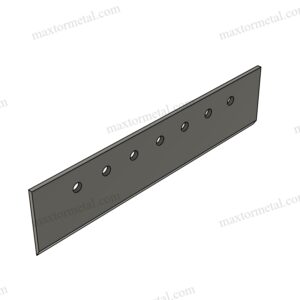
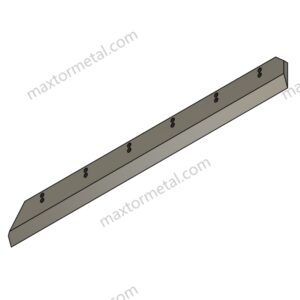
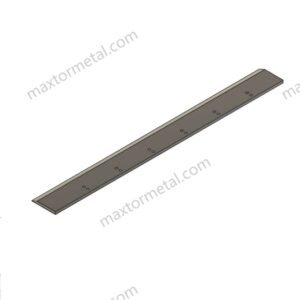

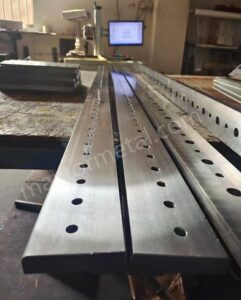
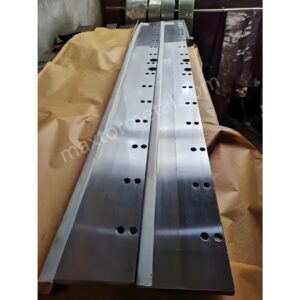
Dễ dàng tận hưởng sự tiện lợi khi nhập khẩu, từ khâu vận chuyển đến thông quan, chúng tôi xử lý toàn bộ quy trình, bạn chỉ cần trả thuế VAT và chờ hàng về công ty.
Chúng tôi đã thấy các lưỡi dao của nó được sử dụng trong vô số ứng dụng và sẵn sàng xử lý bất kỳ dự án nào bạn thực hiện theo cách của chúng tôi - mang lại độ chính xác, độ bền và mức giá cạnh tranh chưa từng có.
Cho dù bạn cung cấp bản vẽ, phác thảo hay mẫu, chúng tôi đều có thể vẽ và sản xuất cho bạn. Chúng tôi cũng có khả năng hỗ trợ sửa đổi các thiết kế và thông số kỹ thuật hiện có để cải thiện hầu hết mọi ứng dụng công cụ công nghiệp. Vui lòng liên hệ với đội ngũ bán hàng tận tâm của chúng tôi để thảo luận về các yêu cầu cụ thể của bạn.
Một loạt các thử nghiệm và kiểm tra được thực hiện để kiểm soát chất lượng, bao gồm kiểm tra sản phẩm đầu tiên, kiểm tra vật liệu đầu vào và vật liệu được chứng nhận, kiểm tra chất lượng trong quá trình, kiểm tra chất lượng cuối cùng.
Cho dù bạn là nhà nhập khẩu, nhà phân phối, nhà bán buôn hay người dùng cuối, chúng tôi đều hoan nghênh bạn tham gia cùng chúng tôi với MOQ tối thiểu, không gặp rắc rối khi tìm hiểu thông tin và tự do hơn khi mua hàng.
Trở thành người giám sát độc quyền của bạn, truyền tải thường xuyên mọi nút quan trọng trong dây chuyền sản xuất, bất kể ở xa đến đâu, tiến độ của sản phẩm đều được nắm bắt càng sớm càng tốt!
Hướng dẫn tối ưu để bảo dưỡng lưỡi cắt Guillotine: Kéo dài tuổi thọ và tối ưu hóa hiệu suất
CÔNG TY TNHH CÔNG NGHIỆP Metal Nam Kinh
Khu công nghiệp Mingjue, Lishui, Nam Kinh, Giang Tô, Trung Quốc
Luôn cập nhật với những tin tức mới nhất của chúng tôi.